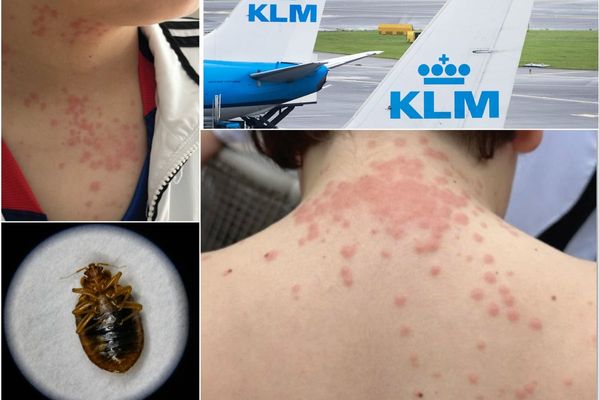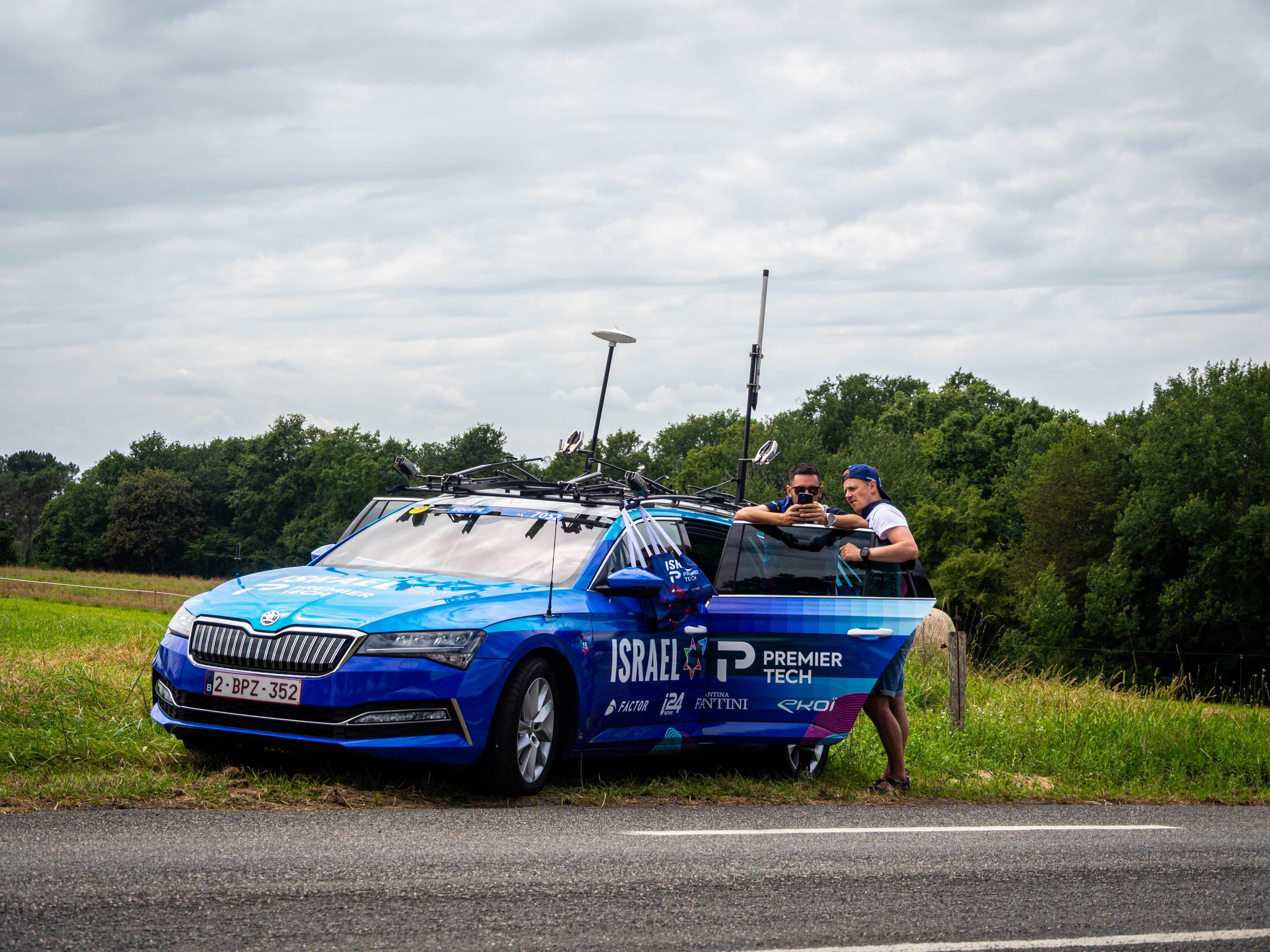
For my time at this year's Tour de France, I gave myself a side project of reporting on the race in a slightly different way. My usual tack is that I'll go to team hotels at the Grands Départ, and photograph bikes while keeping an eye out for new tech. I'll then go to the start each morning and do some of the same. Anything I spot will be turned into news, such as my story about the new Factor O2 VAM, and any bikes photographed turned into galleries, like Jonas Vingegaard's Cervelo S5.
One branch of my 'alternative' approach was via social media. During my time, I basically stole the keys to the cyclingnews_feed Instagram and TikTok channels and went wild. Sorry boss.
The other branch was trying to see alternative stories, such as my very-important feature on the dogs of the Tour de France, or alternative parts of the race that you don't get to see on TV. Within that, I got to see behind the scenes at the Israel Premier-Tech team briefing, on the bus before stage 4, and as part of the same invite, I was also allowed to jump into one of the team's feed zone cars.
After stepping off the bus once the briefing had finished, I was immediately introduced to my day's chaperones, team soigneirs Xesco and Kristaps. Xesco would be the driver, Kristaps would be riding shotgun, and I would sit in the rear, accompanied by a spare "just-in-case" pair of wheels and a cool bag full of snacks. The boot (trunk) behind me was filled with an ice box and another cool bag.
We are one of three feed zone cars per team for the day, and our position will be 106km into the day's route, so our day starts with a drive.

The drive
We follow the course, so we're on closed roads, and spectators are strewn across almost its entirety. Laybys become home to pop-up picnics, fields home to spontaneous barbecues, and villages are turned into miniature festivals.

Fancy dress is a regular occurrence, and my company for the day seem unphased by the strange things we see, such as the clown in the hedgerow, as if it were an everyday occurrence. They confirm it is.
We are in a convoy of vehicles from the race including fellow feed zone cars, race officials, and vans whose sole purpose as I can decipher is to be a hype-machine for the crowds at the side of the road. They play loud music as they drive the route, while a couple of people with much more energy than me dance around on the back.
Speed limits don't seem to apply here. I don't feel unsafe by any means, but the whole convoy seems to have a heavy right foot whenever the roads straighten up and become free of spectators.
"It's not a race, but it's a race, you know?"
We're the first to arrive at our base, and so we get first pick of the parking spots. One by one, our contemporaries joined us, creating a mini roadside paddock.
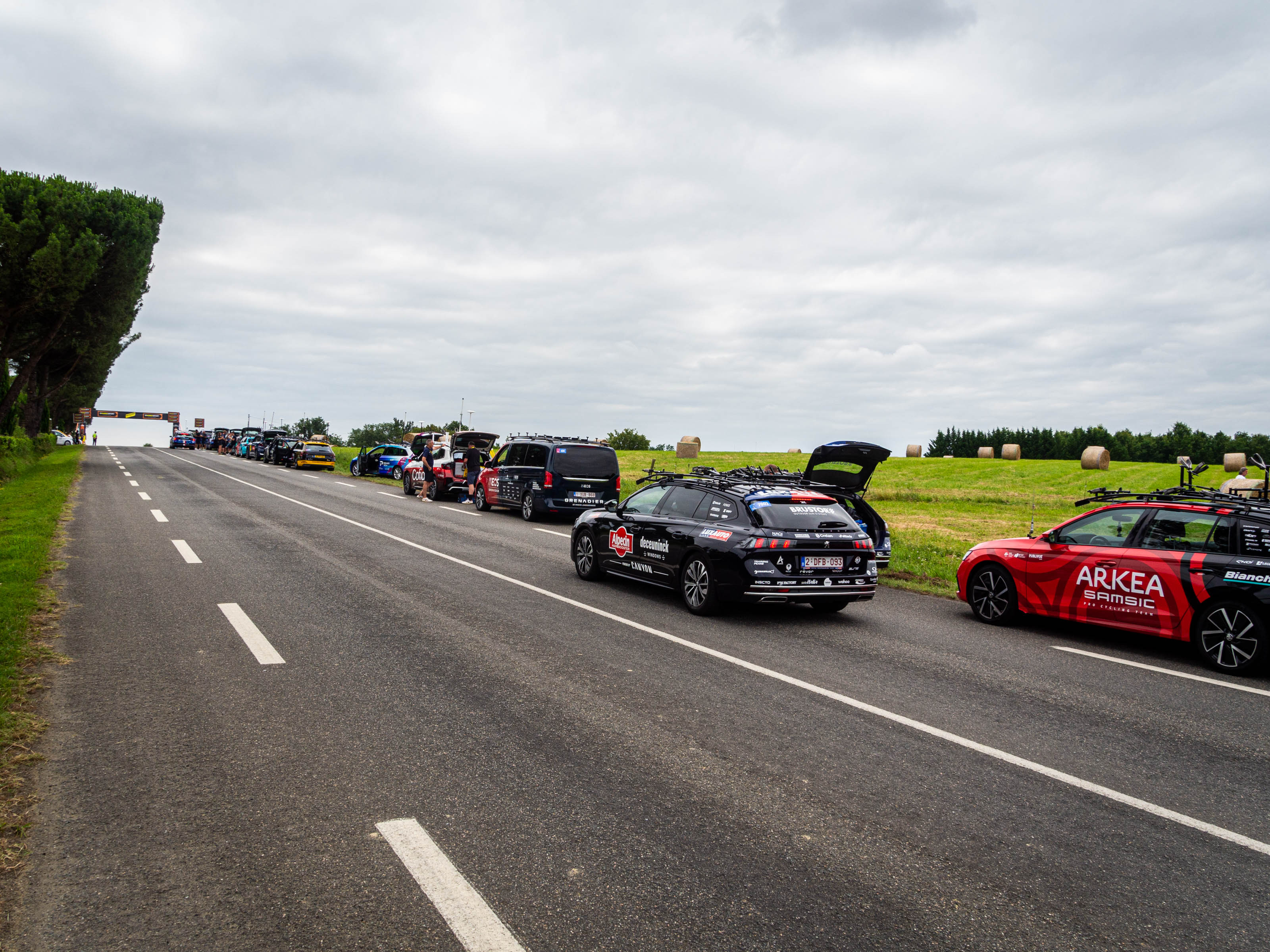
Wondering whether it's beneficial to arrive early, Xesco's response was "It's not a race, but it's a race, you know?"
In an area with more limited parking, the closer you can get to the ideal feeding spot, the easier you make your life as a soigneur. On a road like this, though, wide open with plenty of roadside space to park, there were no real gains to be had for our early arrival.
It did give us the most time to prepare the day's delicacies, but as it quickly transpired, there was no rush. This was stage 4 from Dax to Nogaro which if you recall, was ridden at an average speed of around 37km/h until the final 25km. We had more than two hours to kill.

While my friends enjoyed lunch, I took a walk to the brow of the hill on which we'd parked. Most of the soigneurs sat on their car bonnet or perched in opened boots, enjoying some well-earned downtime. This is the point at which they can phone home, check social media, and enjoy a chat with their contemporaries. Occasionally, Kristaps tells me, a complex day of racing might add stress at the feed zone. Extra water and ice socks are the most common requests, which come in via Whatsapp from the team managers, especially on hot days as riders battle to keep their core temperatures down, but different drink mixes are also requested.

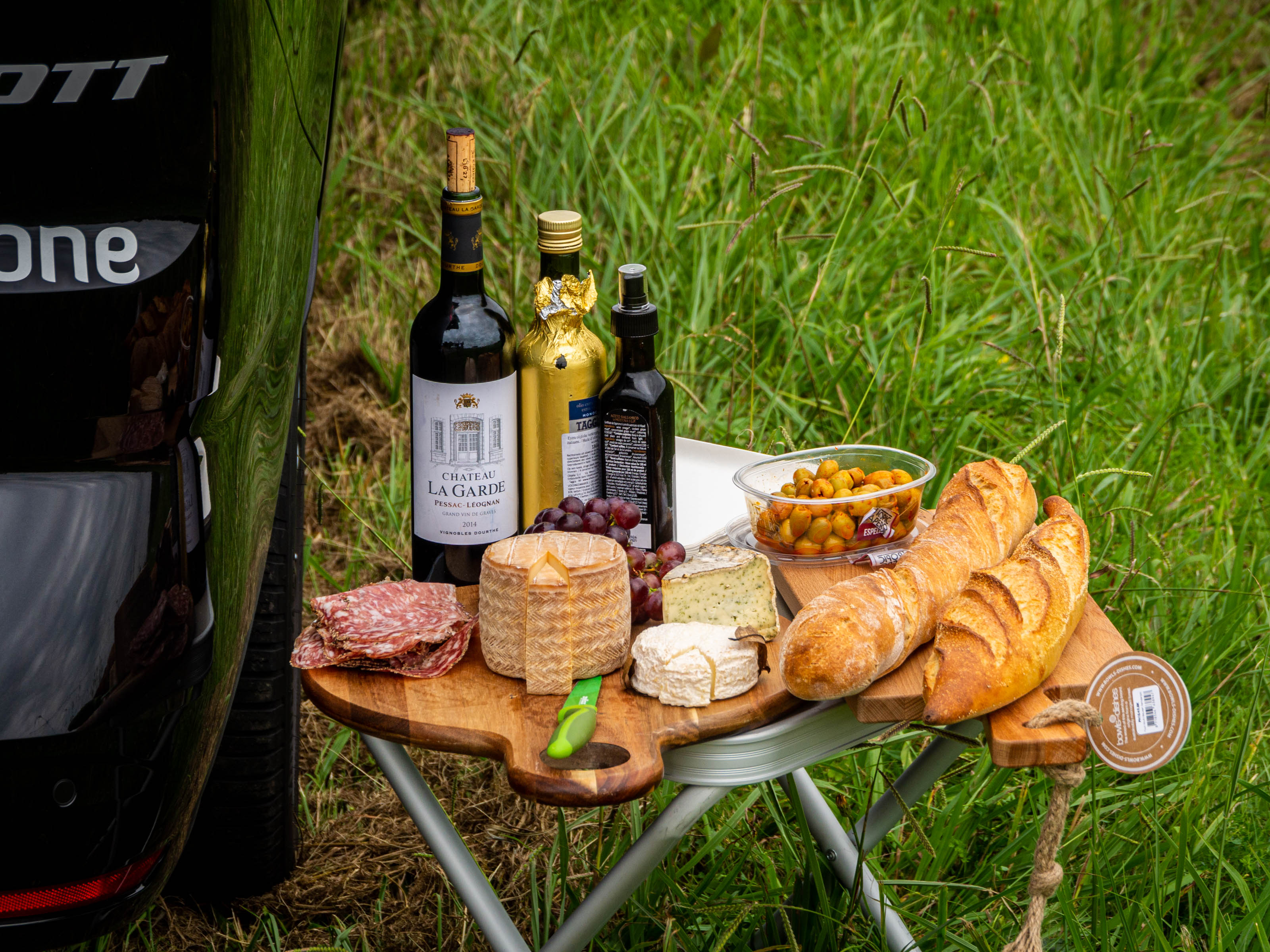
For soigneurs, every day at the Tour de France is long. For Xesco and Kristaps, they are typically between 11 and 13 hours from start to finish. Both are multi-talented and underrepresented by their simple title of 'carer': They are trained massage therapists, Kristaps is a qualified physiotherapist, and both have been with the Israel Premier-Tech team for more than three years.
What's in the bag?
With around 30 minutes to go, the pair begin preparing lunch for the riders. For the most part, this is already made, so apart from cutting and wrapping bananas, this is just a case of filling each musette with the necessary components.

Within each musette, riders are treated (if that's an appropriate word) to a fairly functional selection of food. Two rice cakes, one with Oreo and one plain make up the main course. There's also an oatcake bar, a sweet bar, and an orange-flavoured 'unusual food' energy jelly, all courtesy of sponsors Santa Madre.
A miniature can of coca cola provides an intense kick of sugar and caffeine, while two drink mixes - of varying ratios - are in the bottles. Each rider gets a musette, but it's typically the domestiques who take them. Not shown above is the cut-in-half bananas, which the pair were still preparing as I took this photo.
Lunchtime
As the race gets closer, the stream of cars coming past gets ever more regular. Hype vans become more infrequent, replaced by a steady stream of Skodas filled with dignitaries, VIPs, officials and the like. Helicopters, both military and television, appear in the distance.

At this point, like sprinters in a final few kilometres of a flat stage, the soigneurs' fight for position begins. Feeding will take place on the way up a hill. The terrain is an important part of the feedzone plan, I'm told. You want to try and avoid feeding on a descent, as the faster the riders, the greater the chance of missed bottles and crashes.
The pair split up. Xesco took position at the start of the line, with Kristaps towards the back. If riders miss the first feed, there's a second chance.

As the tension evidently built, I asked Xesco if he got nervous at this point. "No, not anymore," came his response, "today is easy." Given it's a sprint day with a two-man breakaway under total control and all the feed cars are parked together, the peloton will slow down for the feed.
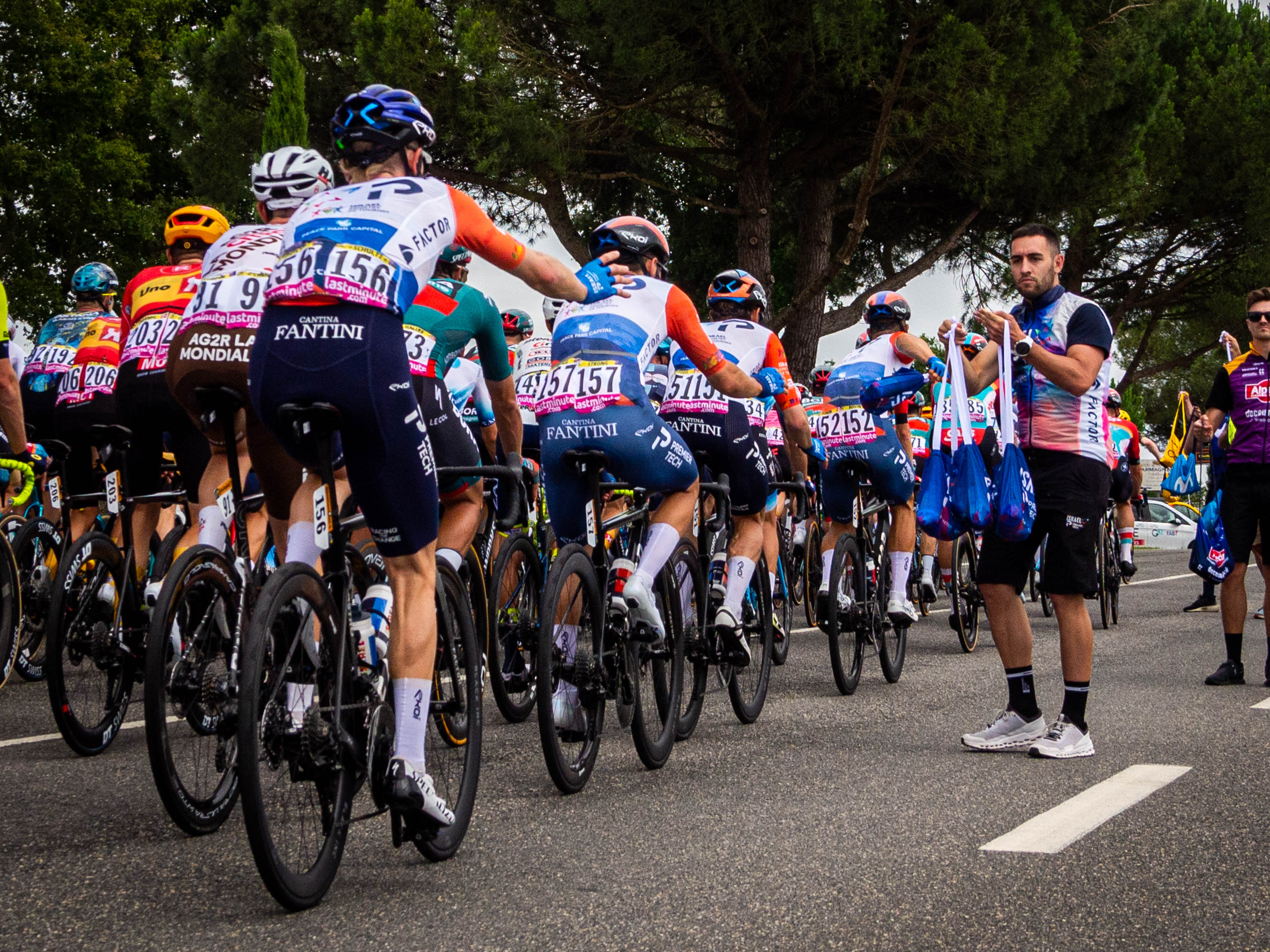
Upon watching the subsequent hand-up, he wasn't wrong. Aside from Simon Clarke being clouted in the face by a Cofidis musette, it all went away without issue.
The race to the finish
The drive to the finish was faster than the start; this time it was a bit more of a race. There's 75km separating us and the finishing circuit in Nogaro, and knowing the riders would also be racing to get there meant a sense of urgency to get there before the motor racing circuit was closed to traffic.
Despite being on closed roads and in a Tour de France convoy, when we passed a speed camera, there was a collective hesitance from my driver and the cars around us. Both Xesco and Kristaps were unsure of the rules here but preferred to err on the side of caution rather than get caught out.

Luckily, after a short while, we could divert off the race route and take a more direct route, via small country lanes, to the finish. To my surprise, car crashes are rare; occasionally wheels are damaged from hitting kerbs or potholes, but that's as bad as the pair have seen.
We arrived at the finish around 45 minutes before the riders. Just enough time for me to drop my bag in the press room, grab some chips, watch the finish, interview Mark Cavendish on his oh-so-close second-place finish, and witness a battered and bruised Fabio Jakobsen climb gingerly onto the Soudal-QuickStep bus.





